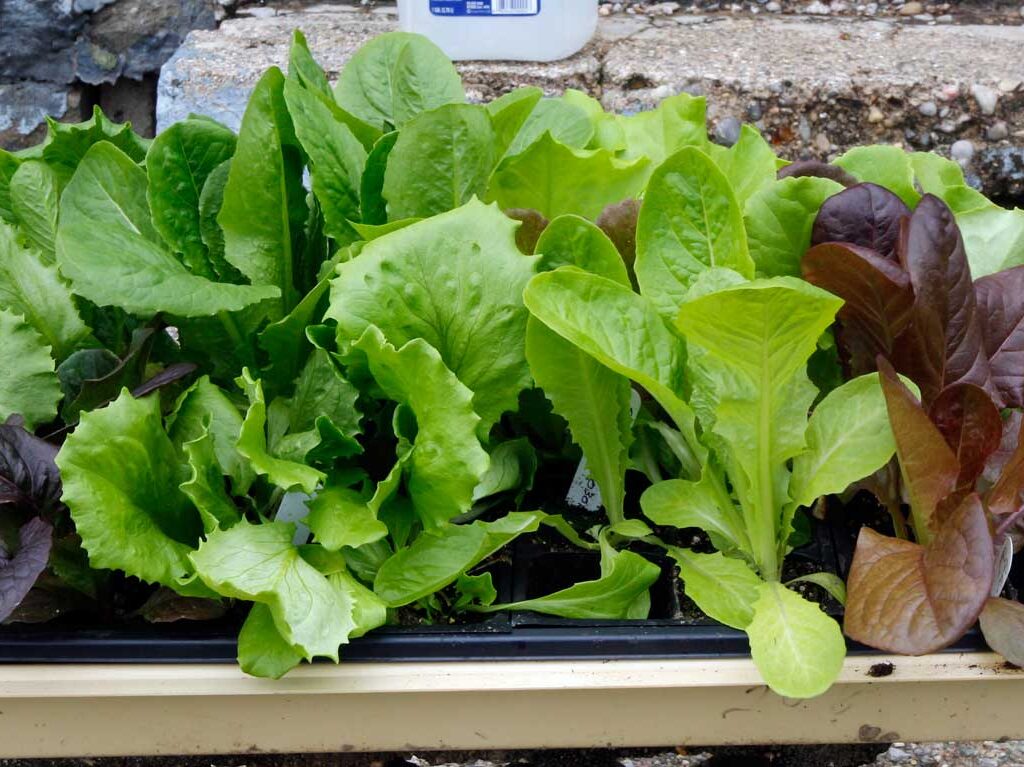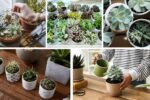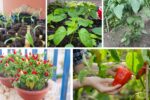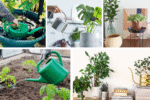There’s nothing quite like harvesting your own fresh, crisp lettuce straight from the garden. Whether you love a classic Caesar, a colorful mixed salad, or crunchy sandwich toppings, growing lettuce at home is easier than you might think — and incredibly rewarding.
In this detailed guide, we’ll walk you through everything you need to know about how to start growing lettuce, from choosing the right varieties to planting, caring for your crop, and enjoying harvest after harvest.

Why Grow Lettuce at Home?
Lettuce is one of the fastest-growing, low-maintenance vegetables you can grow, making it perfect for beginners and seasoned gardeners alike. Here’s why you should give it a try:
- Quick harvest: Some types are ready to pick in just 30 days.
- Grows well in containers or garden beds.
- Cool-season crop — perfect for spring and fall.
- Endless variety: From buttery Bibb to peppery arugula.
- Chemical-free, fresh greens at your fingertips.

Choosing Lettuce Varieties
Lettuce comes in several types, each with its own texture, flavor, and growth habits. Picking the right type depends on your taste and growing conditions.
Major Lettuce Types:
- Leaf Lettuce:
- Loose leaves, mild flavor.
- Includes varieties like Green Salad Bowl and Red Sails.
- Quickest to harvest.
- Romaine (Cos):
- Upright heads with crisp texture.
- Ideal for Caesar salads.
- Varieties: Parris Island Cos, Little Gem.
- Butterhead (Bibb or Boston):
- Soft, tender leaves with a buttery texture.
- Compact heads.
- Varieties: Tom Thumb, Buttercrunch.
- Crisphead (Iceberg):
- Tight, crunchy heads.
- Takes longer to mature.
- Requires cooler weather.
- Specialty Types:
- Arugula, Mâche, Mizuna for peppery or nutty flavors.
When to Plant Lettuce
Lettuce loves cool weather and thrives in early spring and fall.
- Plant in spring: As soon as the soil can be worked, about 2-4 weeks before the last frost.
- Plant in fall: 6-8 weeks before the first expected fall frost.
- Lettuce prefers soil temperatures between 45°F and 70°F (7°C–21°C).
- Can be grown year-round in mild climates or indoors under grow lights.
Pro tip: Stagger plantings every 2-3 weeks for a continuous harvest.

How to Start Growing Lettuce from Seed
Lettuce is one of the easiest vegetables to grow from seed.
Prepare the Soil:
- Choose a sunny spot (partial shade is fine in hotter climates).
- Soil should be loose, well-drained, and rich in organic matter.
- Work in compost or aged manure before planting.
- Ideal soil pH: 6.0–7.0.
Sow the Seeds:
- Direct sow seeds ¼ inch deep in rows or scatter for a mixed bed.
- Space rows about 12-18 inches apart.
- Cover seeds lightly with fine soil or compost.
- Water gently to settle seeds.
- Keep soil consistently moist for good germination.
- Seedlings should emerge within 7-10 days.
Pro tip: Mix small seeds with fine sand for even sowing.

Caring for Lettuce Plants
Lettuce is relatively low maintenance but thrives with consistent care.
Watering:
- Keep soil consistently moist but not soggy.
- Water early in the morning to avoid afternoon heat.
- Use drip irrigation or a watering can to avoid wetting leaves (prevents disease).
Thinning:
- Once seedlings are 2-3 inches tall, thin to 4-6 inches apart for leaf types, and 8-12 inches for head lettuces.
- Snip excess seedlings with scissors instead of pulling to avoid disturbing nearby plants.
Mulching:
- Apply a thin layer of organic mulch (straw, grass clippings, or shredded leaves) to:
- Retain soil moisture.
- Keep soil cool.
- Suppress weeds.
Fertilizing:
- Lettuce is a light feeder.
- Work in compost or a balanced 10-10-10 fertilizer before planting.
- Side-dress with compost or liquid fish emulsion mid-season.

Common Pests and Problems
| Problem | Cause | Solution |
|---|---|---|
| Aphids | Sap-sucking insects | Wash off with water, use neem oil, or introduce ladybugs |
| Slugs and snails | Moist, shady conditions | Use crushed eggshells, beer traps, or handpick at night |
| Downy mildew, leaf rot | Poor air circulation, wet leaves | Space plants properly, water at soil level |
| Bolting (premature flowering) | Hot weather or stress | Plant early spring/fall, choose bolt-resistant varieties |

Companion Planting for Lettuce
Companion planting helps boost growth and deter pests.
Good companions:
- Carrots, radishes, beets (different root depths)
- Chives and garlic (repel aphids)
- Marigolds (deter nematodes and slugs)
Avoid planting with:
- Cabbage family crops (compete for nutrients)
- Parsley (can hinder lettuce growth)
Harvesting Lettuce
One of the best things about growing lettuce is its quick harvest time.
- Leaf Lettuce: Harvest outer leaves when 3-6 inches long. Cut-and-come-again style allows continuous picking.
- Butterhead and Romaine: Harvest whole heads when firm and full-sized.
- Crisphead: Wait for tight, dense heads (can take up to 80 days).
Use a sharp knife or scissors to cut leaves or heads about 1 inch above soil level.
Pro tip: Harvest in the early morning for the freshest, crispest greens.
Storing and Using Lettuce
- Rinse leaves gently and dry with a salad spinner.
- Store in a perforated bag or container lined with paper towels in the fridge.
- Use within 5-7 days for best quality.
- Lettuce is perfect for salads, wraps, sandwiches, or as edible garnishes.
Growing Lettuce in Containers
Lettuce thrives in containers on patios, balconies, or windowsills.
Container tips:
- Use pots at least 6-8 inches deep.
- Fill with a high-quality potting mix.
- Sow seeds as directed and thin once seedlings sprout.
- Keep soil consistently moist and place in a spot with 4-6 hours of sun daily.
- Great for cut-and-come-again harvesting.
Pro tip: Grow different varieties in a single container for a mixed salad harvest.
Final Growing Tips for Success
- Choose bolt-resistant varieties if growing in warmer weather.
- Sow in succession every few weeks for a steady supply.
- Shade plants in high heat to prevent bitterness and bolting.
- Always keep soil moist during germination — lettuce seeds won’t sprout well in dry soil.
- Don’t over-fertilize — too much nitrogen results in leafy growth but poor flavor.
Conclusion
Growing your own lettuce is one of the most rewarding and beginner-friendly gardening projects you can undertake. With its quick harvest time, versatility, and minimal space requirements, lettuce is ideal for gardens big and small — or even just a sunny windowsill.
By following this complete guide on how to start growing lettuce, you’ll enjoy crisp, fresh greens at your fingertips throughout the growing season. So grab a pack of seeds, prepare your soil, and get ready for your best-tasting salads ever!





